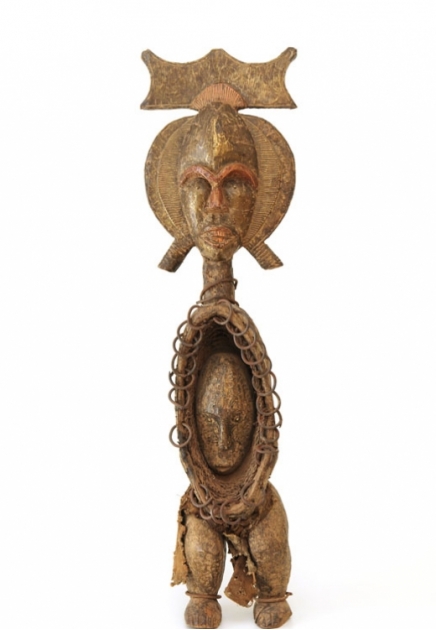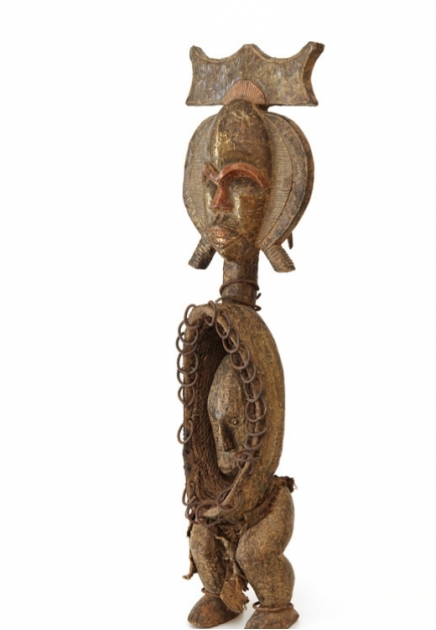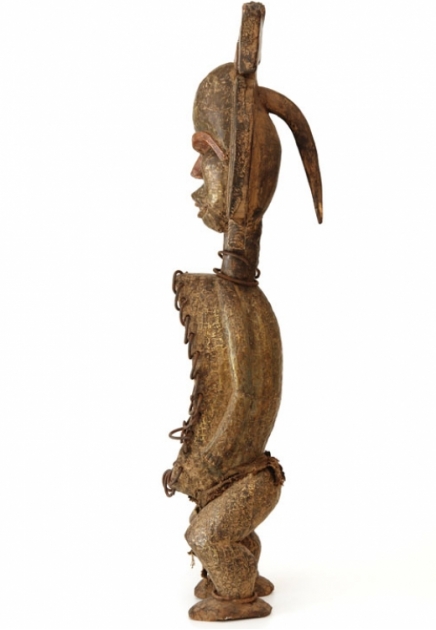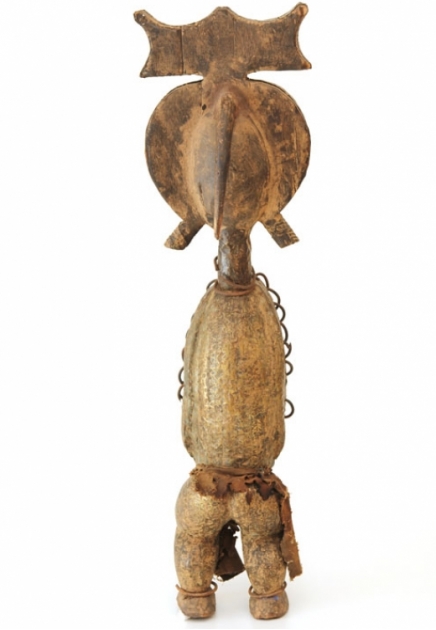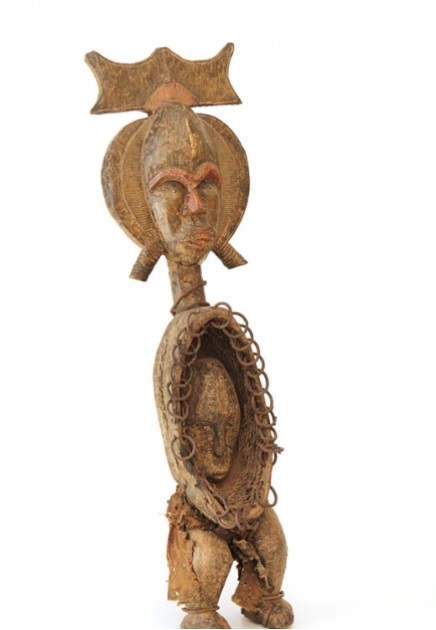Reliquary Figure
On one of my trips to Central Africa, I purchased four interesting items, two similar statues, a door and a stool. The Gabonese dealer jealously guarded his sources, reluctant to provide any specific information, such as location, region, or name of village. He only stated that they were from Kota (north-east of Gabon) and had belonged to a respected, powerful and wealthy chief who converted to Islam, had built a new modern spacious villa, and sold his old traditional house, including its sculptured decoration.
This is a very unique statue, made of wood, completely covered with brass plaques. It has a "Kota" head (with a minor variation), but the extraordinary element is the statue’s front, composed of a cavity, in the form of a woven basket, containing a sculpted skull. The body is actually sculpted in the shape of a reliquary chest. These reliquary baskets were kept for generations but during the 20th century, when religious beliefs changed, they were abandoned or even destroyed. Between 1940 and 1964, a local Christian movement referred to as the 'cult de demoiselles' was responsible for the destruction of most of these traditional objects. This movement was based on the idea that mimicking western values and lifestyles, as well as abandoning the old cult and idols, would help them to gain what they perceived as “western power" (J. Bacquart). In addition, Islam takes the First Commandment literally, the prohibition on representational imagery: "Thou shalt not carve thyself images, or fashion the likeness of anything in the heaven above, or on the earth below.”
This figure consists of a realistic oval face. Viewed from the front,the body holds a cavity of a woven basket containing a sculpted skull (brass plated). So, if we continue with the first impression, it could represent an ancestor skull and its reincarnation as a fetus in the womb. Symbols of the continuity and cyclical nature of life, death and rebirth, are clearly evident to the spectator. The aim of these reliquary rites was always to sustain close contact between the living and the ancestral spirit world. In addition, a political dimension was added to the religious role of the reliquary; it legitimized the chief's power through the possession of the skulls and various relics of the chiefs who had previously led the clan (L. Perrois). So, it is more than understandable that the chief surrounded himself with the emblematic elements of the past.
J. Bacquart, The Tribal Arts of Africa, 1998, p.120; F. Herrmann, Africa, The Art of a Continent, 1999, p. 235 L. Perrois, Art Ancestral du Gabon, 1972

